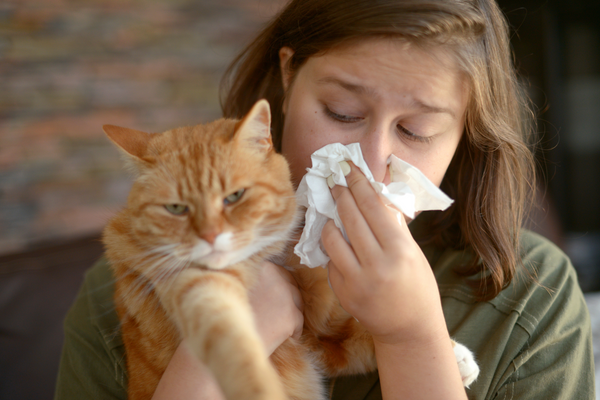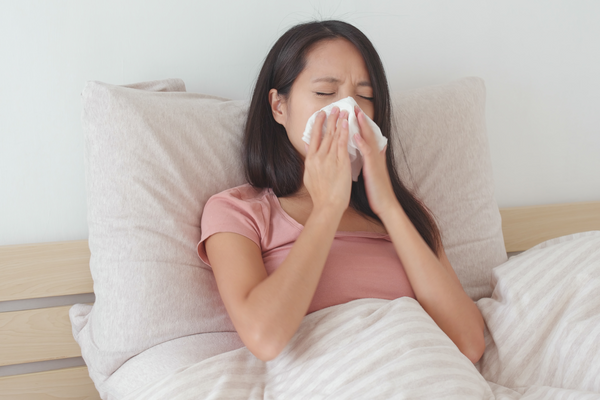What’s the Best Way to Wash Secondhand/Thrifted Clothing to Remove Allergens?

How to Make Your Secondhand Clothes Fresh & Allergen-Free
Shopping secondhand is becoming increasingly popular as people look for ways to be stylish and environmentally conscious. But we've all been there—you find the perfect piece of clothing at a thrift store or vintage shop, but it smells like mothballs and old perfume. Or maybe you picked up a designer item for a fraction of its original price, only to find out it's been sitting in someone's closet too long. And that they definitely had at least one cat in their home. While these details might not bother everyone, buying secondhand can be tricky for those who are sensitive to fragrances, dust, pet dander, smoke, and other allergy triggers.
Don't worry! There are ways to neutralize allergens and freshen your secondhand clothes––without masking the funk with fragrance. Here is everything you need to know about washing thrifted garments so that you can enjoy your new-to-you wardrobe.
What Can Linger in Secondhand Clothing?
Dog and cat dander, cigarette smoke, laundry detergent residue, you name it. Unless you know the specifics of where the items you’re buying have been, it’s hard to tell what’s hanging out in those fibers. One way to ensure your new-to-you clothes are clean and healthy is to wash them with an anti-allergen laundry detergent like The Ecology Works Anti-Allergen Laundry Detergent. This detergent helps remove allergens from fabrics, reducing skin irritation or allergies due to dust mites, smoke residue, or pet dander that may have accumulated on secondhand items over time. This long-lasting odor neutralizer leaves clothing fresh––without masking fragrances. Our detergent is also safe to use full-strength on fabrics as a pre-treatment for stubborn stains. Plus, it's made with plant-based ingredients, so it's gentle on fabrics and effective against dirt and odors!
Related: How Long Does Cat Dander Stay on Surfaces?
Tips on Washing Thrifted Clothing
Washing secondhand/thrifted clothes doesn't have to be daunting! There are several simple steps to help remove any lingering odors from previous owners and ensure your new wardrobe pieces smell fresh again.
Step 1: Understand the Fabrics You’re Working With
The first step in washing any type of clothing is understanding the fabrics you’re working with. Different materials have different needs when cleaning them, so take some time to look up how each material should be washed before you jump into the laundry. This will help ensure that your clothes come out looking their best.
Step 2: Pre-Treat Stains
Pre-treat any visible stains with a damp cloth and a little bit of liquid detergent. Let the clothing item air dry entirely before laundering.
Step 3: Use Cold Water & Gentle Detergent
When washing secondhand or thrifted clothing–especially vintage pieces–always use cold water and a gentle detergent like The Ecology Works Anti-Allergen Laundry Detergent. This detergent is specially designed to remove allergens from clothing, including pet dander, smoke, and mold, making it perfect for those who suffer from allergies or asthma. Plus, it's free of perfumes, dyes, enzymes, and other allergy triggers.
Step 4: Choose Your Drying Method Carefully
Finally, make sure you choose your drying method carefully. Air drying is always best for delicate fabrics like silk or lace, but if you need something dried quickly, opt for a low-heat tumble-dry setting instead. Just make sure that whatever method you choose doesn't damage the fabric!
Shop Sustainably + Tackle Laundry Sustainably
While shopping secondhand can be rewarding, it does come with some unique challenges—including finding ways to get rid of that pesky musty smell! But don't worry; with our helpful tips and The Ecology Works Anti-Allergen Laundry Detergent at your side, you'll be able to keep your secondhand clothes looking (and smelling) as good as new! So go forth confidently into those thrift stores, knowing you have all the tools necessary to ensure your garments are clean and safe for wearing again soon!
Have questions about which allergen-reducing products are best for your home? Contact us today to talk about allergen-busting, or check out our Instagram for everyday tips on reducing or preventing allergies for the long term.




